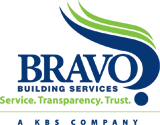Keeping tenants happy in collaborative (open) work space requires a different type of cleaning.
The fact is many companies are transitioning to a collaborative work space design. The results are:
- Offices are more densely populated – it is not uncommon to see companies leasing less space and consolidating staff in areas less than half of what they previously leased.
- Fewer number of private offices
- Higher number of conference rooms
- Increased usage of conference rooms due to fewer private offices
- The creation of pods & collaborative meeting space (communal areas)
- Increased hoteling – the practice of providing office space to employees on an as-needed basis rather than the traditional assigned seating concept
How collaborative work space design affects your cleaning:
- More trash is produced in a smaller area because of the higher density.
- The restrooms on your floors are used more frequently; thus, consumables run out faster and policing becomes more critical.
- Conference rooms need to be policed between meetings, which are continuous throughout the day.
- Social areas need to be policed as employees use, then vacate, the area.
- More than one person may sit at a desk on any given day.
To ensure your collaborative work space is clean, you may want to revisit your cleaning spec and staffing. One significant shift is the day staff role has become more important. They must increase restroom policing to ensure supplies are well-stocked and the fixtures are clean. Since the conference rooms are more active, the day staff needs to be aware of the conference room schedules so they can police them between meetings. This will ensure chairs are in place, coffee mugs or trash is removed, and tables are wiped, eliminating rings or soil inadvertently left behind.
Pod areas require the same type of policing, even though they are not traditionally “reserved” like a conference room.
Desk space used for hoteling should be cleaned when one person leaves and before the next arrives. Most people are respectful of their coworkers, but even the most conscientious employee may inadvertently leave a coffee mug ring, a candy wrapper, or fingerprints on the workstation. If any soiling is visible, the new arrival may feel the work space is unsanitary, lowering their satisfaction. In addition, if the previous occupant was sick, the work area must be carefully sanitized to avoid the spread of germs and infection; this, in turn, will help to reduce employee absenteeism due to illness.
From a cost perspective, this change in cleaning does not have to have a negative impact on your cost. Having an increased day staff may be offset by reducing the night staff. The day staff, when scheduled and managed correctly, can perform some tasks traditionally performed in the evening. Examples are restocking restrooms, pulling trash in common areas, workstations and conference rooms when they are unoccupied, cleaning the kitchen areas, and vacuuming the common areas.

